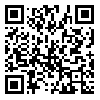Volume 9, Issue 2 (Vol 9, No 2, Summer 2013 2013)
irje 2013, 9(2): 1-14 |
Back to browse issues page
Download citation:
BibTeX | RIS | EndNote | Medlars | ProCite | Reference Manager | RefWorks
Send citation to:



BibTeX | RIS | EndNote | Medlars | ProCite | Reference Manager | RefWorks
Send citation to:
Mohammadbeigi A, Hassanzadeh J, Eshrati B, Mohammadsalehi N. Inequity in Health Measurement Indexes and Application to the Health Care Utilization Data . irje 2013; 9 (2) :1-14
URL: http://irje.tums.ac.ir/article-1-5062-en.html
URL: http://irje.tums.ac.ir/article-1-5062-en.html
1- PhD in Epidemiology, School of Health, Qom University of Medical Sciences, Qom, Iran
2- PhD in Epidemiology, Department of Epidemiology, School of Health and Nutrition, Shiraz University of Medical Sciences, Shiraz, Iran
3- PhD in Epidemiology, Department of Epidemiology, School of Health, Arak University of Medical Sciences, Arak, Iran
4- MSc in Epidemiology, Vice chancellor of Health, Arak University of Medical Sciences, Arak, Iran ,nm.salehy@arakmu.ac.ir
2- PhD in Epidemiology, Department of Epidemiology, School of Health and Nutrition, Shiraz University of Medical Sciences, Shiraz, Iran
3- PhD in Epidemiology, Department of Epidemiology, School of Health, Arak University of Medical Sciences, Arak, Iran
4- MSc in Epidemiology, Vice chancellor of Health, Arak University of Medical Sciences, Arak, Iran ,
Abstract: (21727 Views)
Background and Objectives: Inequity in health is a universal term which used for showing current differences, variations and inequalities of people in access to health. But inequality in health refers to some inequities which seems are unfair or caused by some errors and biases. The current study aimed to describe some of the common health related inequity measures to be useful for the inequity researchers and other interested health coworkers.
Methods: The calculation, advantage and disadvantage of most common health-inequity indexes including slope index of inequity, relative index of inequality, Theil’s Index, mean log deviation, index of disparity, Gini coefficient, weighted utilization social welfare function, absolute and relative concentration index were assessed. Inequity size of these measures was calculated by using the health care utilization survey data.
Results: Average of health care utilization in in-need subjects was 66.4%. This indicator was in the first to fifth quintiles equal to 57.6%, 63.4%, 71.6%, 69.5% and 75.3%, respectively. Relative concentration index and Gini coefficient was calculated as 0.053 and 0.0062, respectively.
Conclusion: Inequity in health care utilization in Markazi province differs based on the types of inequity measures. Selection of the inequity indexes dependent to the objective and the scale of under study variable. Among discussed indexes, concentration index determine the more accurate and also show the gradient of inequity. Therefore it can be used as the best index.
Methods: The calculation, advantage and disadvantage of most common health-inequity indexes including slope index of inequity, relative index of inequality, Theil’s Index, mean log deviation, index of disparity, Gini coefficient, weighted utilization social welfare function, absolute and relative concentration index were assessed. Inequity size of these measures was calculated by using the health care utilization survey data.
Results: Average of health care utilization in in-need subjects was 66.4%. This indicator was in the first to fifth quintiles equal to 57.6%, 63.4%, 71.6%, 69.5% and 75.3%, respectively. Relative concentration index and Gini coefficient was calculated as 0.053 and 0.0062, respectively.
Conclusion: Inequity in health care utilization in Markazi province differs based on the types of inequity measures. Selection of the inequity indexes dependent to the objective and the scale of under study variable. Among discussed indexes, concentration index determine the more accurate and also show the gradient of inequity. Therefore it can be used as the best index.
Type of Study: Research |
Subject:
General
Received: 2012/05/18 | Accepted: 2013/01/26 | Published: 2013/10/9
Received: 2012/05/18 | Accepted: 2013/01/26 | Published: 2013/10/9
Send email to the article author
| Rights and permissions | |
 |
This work is licensed under a Creative Commons Attribution-NonCommercial 4.0 International License. |





